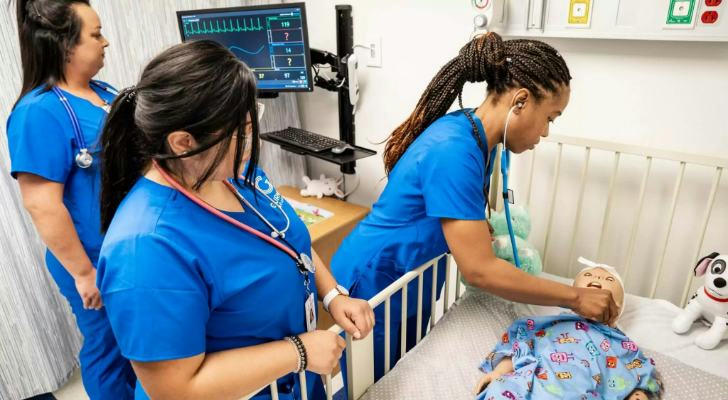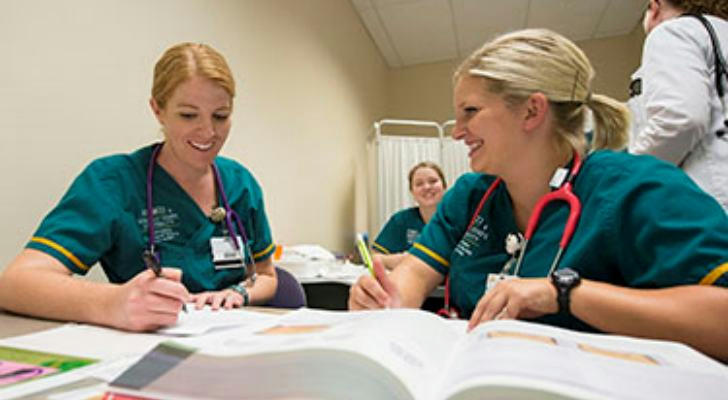The demand for healthcare is growing, and the nursing industry has a good outlook
Nursing is a vital component of the healthcare system in the United States, providing essential care and support to patients across the country. The nursing profession is dynamic, influenced by technological advancements, evolving patient needs, and a growing demand for skilled healthcare professionals. This article explores the landscape of nursing education in the U.S., including the various courses available, market conditions, and employment prospects.

Types of Nursing Degrees
In the United States, aspiring nurses can pursue several types of degrees, each offering different career paths and responsibilities:
Licensed Practical Nurse (LPN) or Licensed Vocational Nurse (LVN): This entry-level position requires a diploma or certificate, typically completed in about a year. LPNs/LVNs work under the supervision of registered nurses (RNs) and physicians, providing basic care to patients.
Associate Degree in Nursing (ADN): The ADN is a two-year degree that qualifies individuals to become RNs. It is the minimum educational requirement for RN licensure, which is obtained by passing the NCLEX-RN exam. ADN-prepared nurses can work in both outpatient and inpatient settings.
Bachelor of Science in Nursing (BSN): A BSN degree is a four-year program that includes liberal arts courses and professional nursing education. It prepares nurses for a wide range of roles and is often preferred by employers due to the additional education in leadership, critical thinking, and case management.
Master of Science in Nursing (MSN): An MSN is an advanced degree that typically takes two years to complete after earning a BSN. It allows nurses to specialize in roles such as nurse practitioners, nurse anesthetists, or clinical nurse specialists.
Doctor of Nursing Practice (DNP): The DNP is a doctoral degree focused on advanced practice nursing. It prepares nurses for leadership roles and specialized practice areas like acute care, pediatrics, or gerontology.
Market Conditions for Nursing Education
The nursing education market in the U.S. is experiencing significant growth, driven by several factors:
Demand for Competency-Based Learning: There is a rising demand for competency-based learning, which emphasizes practical skills and real-world experience. This trend is expected to drive the nursing education market, with a projected growth of USD 161.9 billion from 2025 to 20291.
Technological Advancements: The integration of technology, such as AI and simulation labs, is transforming nursing education. These tools provide students with immersive learning experiences, enhancing their clinical skills and readiness for the workforce1.
Workforce Challenges: The nursing profession faces challenges due to an aging workforce nearing retirement and a shortage of nurses. This shortage has heightened the need for expanded educational offerings to prepare more nurses for the workforce2.
Employment Prospects for Nurses
Nursing offers strong employment prospects due to a high demand for healthcare services:
Job Market Demand: The demand for nurses continues to rise, driven by an aging population and an increased focus on healthcare. Despite fluctuations in applications during the pandemic, interest in nursing programs remains high, with many qualified applicants being turned away due to capacity constraints2.
Career Advancement Opportunities: Nurses with advanced degrees, such as MSNs and DNPs, have opportunities for career advancement into specialized roles like nurse practitioners or leadership positions. These roles not only offer higher salaries but also greater autonomy and responsibility in patient care.
Salary and Benefits: Nursing careers are generally well-compensated, with median salaries varying based on degree level and specialization. For example, BSN-prepared nurses typically earn higher salaries than ADN-prepared nurses, and advanced practice nurses can earn significantly more.

Challenges in Nursing Education
Despite the growth and opportunities in nursing education, several challenges persist:
Enrollment Capacity: Many nursing programs face enrollment limitations due to insufficient faculty and clinical placement sites. This results in thousands of qualified applicants being rejected each year2.
Clinical Experience: Providing diverse and meaningful clinical experiences is crucial for nursing students. However, access to varied clinical settings can be limited, impacting students' ability to develop comprehensive clinical skills.
Technological Integration: While technology offers innovative solutions for nursing education, there is a need for more effective integration of digital tools into curricula to enhance learning outcomes.
Trends in Nursing Education for 2025
As we look to 2025, several trends are shaping the future of nursing education:
Increased Use of Technology: The use of AI, virtual reality, and simulation labs will continue to grow, offering more immersive and effective learning experiences for nursing students.
Competency-Based Learning: There will be a greater emphasis on competency-based learning, focusing on practical skills and real-world experience to better prepare nurses for the workforce.
Partnerships and Collaborations: Educational institutions are forming partnerships with healthcare providers to enhance clinical training and job placement opportunities for nursing graduates.

Conclusion
Nursing education in the United States is a dynamic field, driven by technological advancements, workforce demands, and a growing need for skilled healthcare professionals. While challenges exist, the market conditions and employment prospects for nurses are promising, with opportunities for career advancement and specialization. As the healthcare landscape continues to evolve, nursing education will play a critical role in preparing the next generation of nurses to meet the complex needs of patients across the country.
